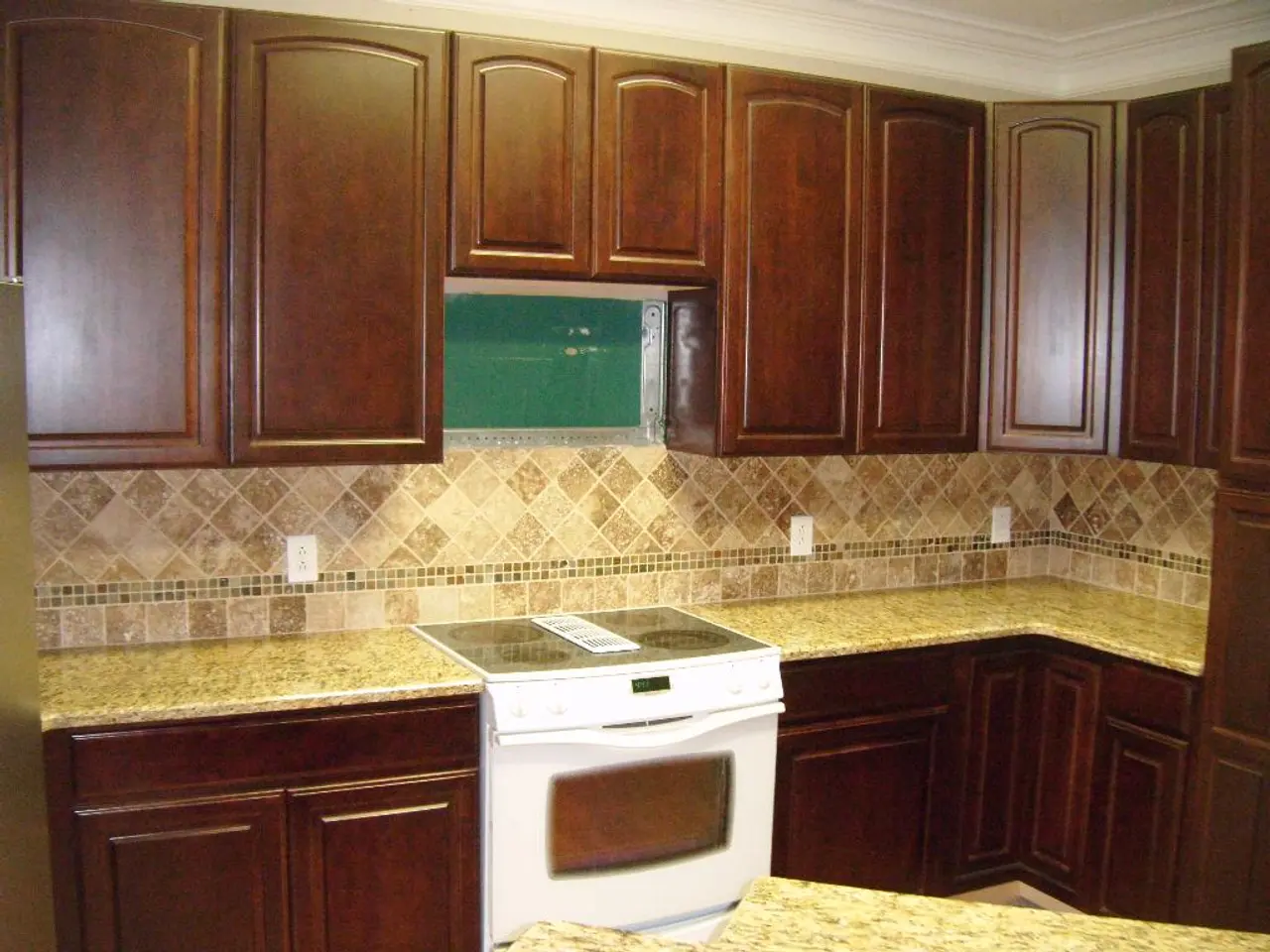Kitchen experts unveil methods for redoing flooring without shifting cabinets, maintaining a polished aesthetic outcome
In the realm of home renovations, replacing kitchen flooring can be a daunting task. However, with the right approach, it's possible to achieve a professional-looking finish without moving the cabinets. Here's a guide based on advice from Matthew O'Grady, Director at Thomas Matthew Kitchens & Furniture.
To replace kitchen flooring without moving cabinets, you typically remove only the floor covering beneath exposed areas and work around the cabinets, cutting and fitting new flooring tightly against the cabinet bases.
- Removing the Old Flooring
Start by carefully removing the old floor layer, such as vinyl, tile, or laminate, without disturbing the cabinet bases or toe kicks. Use tools that minimize the risk of shifting the cabinets.
- Preparing the Subfloor
Ensure the subfloor is clean, dry, and level before installing the new flooring. If necessary, check for signs of water damage or rot, replace damaged parts, and use a leveling compound if the subfloor is uneven.
- Choosing the Right Flooring Type
The easiest kitchen flooring types to replace without moving cabinets are sheet vinyl and luxury vinyl planks (LVP). These are flexible, thin, and can be cut and installed in sections. Other easy options include peel-and-stick vinyl tiles due to their adhesive backing.
- Cutting and Installing the New Flooring
Measure the area for the new flooring and cut the material appropriately. For floating floors like vinyl planks or laminate, start in the corner and work your way out to lock the pieces together. For sheet vinyl, apply adhesive, lay the vinyl, and use a seam roller to ensure proper installation.
- Finishing Touches
Slide flooring boards under the cabinet kickboards to create a seamless look. Leave an expansion gap (usually 10-12 mm) and cover or fill as attractively as possible.
This approach minimizes demolition, reduces labor and cost, and speeds up the project compared to removing cabinets. For a hassle-free kitchen floor replacement without moving cabinets, sheet vinyl or vinyl plank floors are the best choices due to their ease of cutting, installation, and ability to fit around fixed cabinetry.
Prices for different flooring types vary. Expect to pay around £10m2 at the lower end for self-adhesive floor planks, while higher quality vinyl and laminate can easily cost £40-£50m2. Ceramic tiles are slightly higher in price, around £20m2 - £40m2. Engineered wood flooring and solid wood flooring are commonly the most costly, around £30m2 - £60m2.
Remember, it's not wise to break the bank for a kitchen design that will be hidden behind cabinets. So, choose wisely and enjoy your newly renovated kitchen floor!
- To ensure a seamless transition between the new flooring and the kitchen cabinets, pay attention to the cabinet kickboards when sliding the flooring boards beneath them.
- It's essential to consider the energy efficiency and environmental impact of your chosen flooring materials, as a home-and-garden project should reflect your lifestyle and ideals.
- For homeowners who have Storage concerns, keep in mind that some flooring types offer excellent water resistance, making them suitable for kitchen environments prone to spills.
- A guide for homeowners planning a kitchen renovation: start by assessing the condition of the roof, including the roof windows, to prevent water leakage that may lead to costly repairs.
- You'll find numerous design ideas for kitchens on home-and-garden websites, which can serve as inspiration when selecting flooring materials and colors to achieve a cohesive look in your kitchen.
- To create a more spacious feeling in smaller kitchens, choose light-colored flooring, as it will reflect light and make the area appear larger.
- When shopping for flooring materials, bring along a sample of your kitchen cabinet color or finish, as matching the new flooring to your existing furniture is crucial for maintaining a harmonious feeling.
- Combining an updated kitchen floor with a fresh coat of paint on the walls and trim can drastically improve the overall appearance and resale value of your home.




